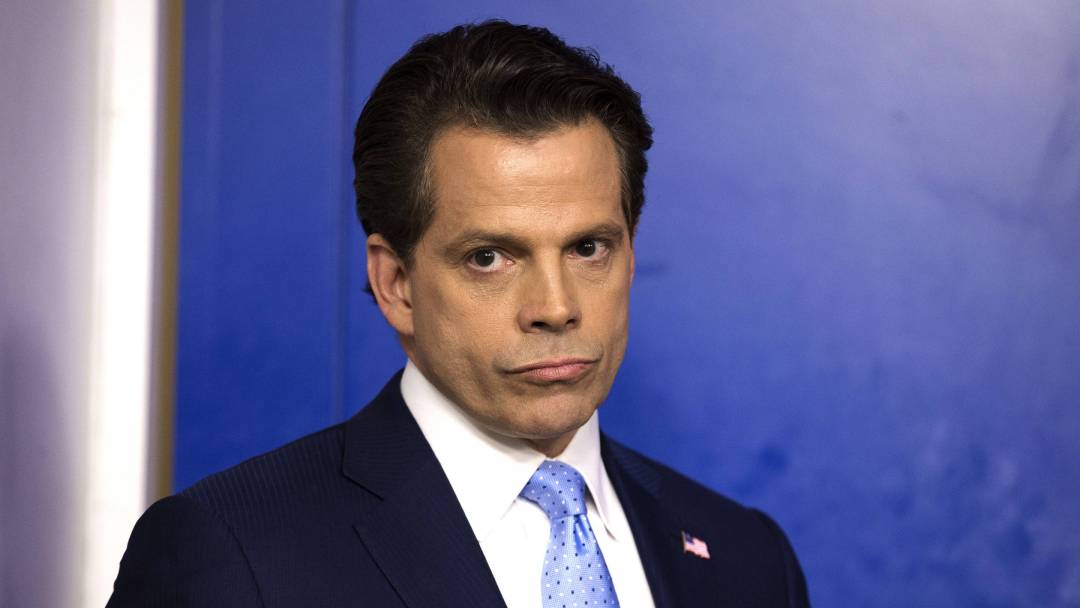
The Race to Make Classic Cars Go Electric Before They Go Extinct
Meet the men converting a Ferrari's purr to an environmentally friendly hum
A red Ferrari 308 GT idles at a traffic light. The same model as Magnum PI’s car, it is one of the most famous classic sports cars in the world. This particular Ferrari belongs to Eric Hutchinson. Seated behind the wheel, a grin spreads across Hutchinson’s face as he warns me, “When the light changes, it’s going to be fast.”
The Ferrari races forward mercilessly fast as I’m thrown back in my seat. The push of acceleration doesn’t relent. There is no shifting of gears, no roaring engine. The speedometer pulls toward 100 miles per hour. The thrill of flying silently is a rare feeling. In this moment, Hutchinson reminds me of an early barnstormer chasing thrills in his hand-built airplane. Other than the passing winds rushing over the open windows, the only discernible sound is the tiny whine creeping from the car’s all-electric engine.
As the owner and maker of the world’s first electric Ferrari 308 GT, Hutchinson is certainly a pioneer. But that’s about to change. In garages and workshops all around the world, countless do-it-yourselfers and shade tree mechanics like Hutchinson are huddling over classic cars and re-engineering them to convert their beloved engines into environmentally friendly accelerators. This is the future. If you love classic cars, you’re facing a dire future without them. Looking down the road, gas-powered motors may be regulated or banned altogether in some states as early as 2040. This was inconceivable just 10 years ago, when Tesla was still an unknown and a gallon of gas cost on average $3.07, but recently, the world has begun planning for the end of the internal combustion engine. Paris and London have set 2040 as the last year dealers will be able to sell gas-powered cars. In India, that milestone will be reached a decade earlier, in 2030. Scotland picked 2032. Following Norway, the Netherlands is requiring all cars to be zero-emission by 2025. China, in the typical guarded style of the Chinese government, has set the same goal yet it has done so opaquely; the government stated it’ll soon ban the sales of gasoline-powered cars as part of their plan to completely dominate the electric vehicle market, but without a proposed time frame.
Conservative politicians like to their case against federal funding of the coming electric car revolution by citing the 2013 bankruptcy of California start-up Coda, along with the Obama-era green energy darling Fisker, which defaulted on governmental loans that same year. The failure of those government-backed companies continues to be one the reasons why the electric car industry has received little to no renewed support from D.C., in both policy and funding.
Of course, talks of an electric revolution in personal transit is nothing new. Ferdinand Porsche built an all-electric car in 1898, the Lohner Porsche. Back in 1900, if you counted all the vehicles on the roads in America, a third were electric. In fact, a story published in the New York Times in 1911 reports that electric cars were particularly en vogue among women. So what happened? In 1912, Henry Ford released his Model T. The super-cheap, gas-powered, go-anywhere car was a third of the price of the average electric car, leading to the gas engine’s domination—that is, until the past decade.
Despite Trump’s regressive approaches to environmental policy, automakers around the world remain committed to a greener future, with or without leadership from the United States. Swedish carmaker Volvo announced the brand will switch to all-electric vehicles in 2019, the same year Porsche plans to release its all-electric model, the Mission E. The projected starting price for Porsche’s four-door sedan, nicknamed “the Tesla-killer,” is a competitive $86,000.
Meanwhile, Italian car-maker Lamborghini, in conjunction with MIT, recently unveiled its Terzo Millennio, a concept car designed with typical sports-car lines and flourishes. The engineers were keen to increase energy storage capacity, so they ditched regular batteries and installed supercapacitors to supply electric power directly and drive the four engines—one per wheel. Lamborghini calls it “the future of sports cars.”
The industry trend toward electric is becoming more self-evident everyday. Last year, the American Automobile Association determined that “30 million Americans are likely to buy an electric vehicle for their next car.” In November, General Motors’s former vice chairman, Bob Lutz, warned that the automotive industry as we know it will be gone in 10 to 15 years. Lutz predicts once there are enough autonomous electric cars on the roads, humans may be banned from driving altogether in an effort to make the roads safer.
The good news for gearheads and classic car lovers is that the green revolution doesn’t have to mark the death of our favorite classic sports cars, which have become such an enduring sign of success, swagger and good old Americana.
If you’re not familiar with the do-it-yourself electric car market, it’s remarkably visible, albeit niche. Typically, a DIY mechanic can purchase an electric conversion kit online. On eBay, one will cost you roughly $5,000. Online retailer Canadian Electric Vehicles sells their “guaranteed” kits for $6,700. That company’s Volkswagen conversion kit includes an 50-horsepower electric motor, controller, harness, dash display and transmission adapter. There’s also the necessary motor mounts, a battery charger, a pot box, a 24-volt AC 50Hz main contactor, a wiring diagram and installation guidelines to help you put all this hardware together. But converting a gas-powered car to all-electric on your own can be supremely intimidating and frustrating, even with the help of online forums, meet-ups and Youtube videos. The easier, all-American way to do it is to contact an electric car mechanic and hire them to convert your classic car for you.
That’s why I’m in San Marcos, flying in a Ferrari: to meet the mechanics on the bleeding edge of this nascent industry. Zelectric Motors makes some of the cleanest converted EV classics you can buy today. Petrolicious, a popular website for auto-minded videos and content, describes Zelectric’s converted Porsches and Volkswagens as “the perfect EV classic.” A tall, casual man, Zelectric cofounder and CEO Dave Benardo is a former creative director for ad agencies. And you definitely get that sense from him: he’s not a grease monkey as much as he is an aficionado, one who appreciates electric cars like any well paid ad man would in 2018.
Benardo’s neighbor, Electric GT, is owned by Hutchinson. It’s walking distance from the auto shop, EV West, which sells custom-made electric conversion packages. Benardo has an informal partnership with EV West, part of Zelectric's small network of specialists it has worked closely with since the company's inception. Zelectric's network of subcontractors includes San Diego fabricators, engineers, mechanics and custom paint, body, upholstery and audio shops. Here at this office park, Zelectric, EV West and their neighbor, Electric GT, collaborate and share innovations. Like those barnstormers from the early days of flight, they tinker and fine-tune every engineering challenge imaginable, always trying to go further, faster, with more power and a smaller carbon footprint.
Benardo shows me the open engine of a Bug they’re converting and explains why the best batteries are Tesla’s latest lithium models. They’re twice as strong as the next best battery, offering the engine the continuous power it needs to accelerate. The trouble is, Tesla doesn’t sell their batteries on the open market. In order to source them, Benardo and other mechanics have to pull them from crashed Teslas. More Teslas on the road—the company reported more than 100,000 Model S and X cars delivered last year—means there are more batteries to be scavenged. It’s a grim business, but until a company invents up a similar lithium battery for retail sale, it’s the best option for reliable power.
“This is an exotic animal. This is not for everybody,” Benardo says hovering over his creation. “This is for a select group of nutty people who don’t shy away from spending $50,000 or $60,000 on a car.” Not so surprisingly, those “nutty people” reportedly include a handful of celebrities, like Arnold Schwarzenegger, who converted his Hummer, and Leonardo DiCaprio, who owns a fully electric Formula E race car. As we chat, Benardo lets it slip that he too is working with a celebrity on an all-electric hot rod. (He may or may not be famous for hosting a late-night talk show.) He explains how they plan to use a Tesla motor to make the old lead sled move. “That’s why we want to have that Tesla motor,” Benardo says, “It’s designed to move a 5,000 pound car. This hot rod won’t do that much speed, but it’ll really scoot along.”
To get a feel for what they’re building, Benardo offers me a drive in his all-electric, 21-window Microbus, a Southern California classic if ever there was one. Compared to the ride in Hutchison’s Ferrari, Benardo jokes, the drive won’t quite be the same. One aspect that is definitely the same? It’s just as silent.
With a flip of a switch, the Bus turns on without rattle, shake or exhaust. Benardo isn’t shy with the accelerator; he doesn’t quite stomp it, but when he steps down we take off with a rush of speed I would have never anticipated.
“In the Porsches, you can shift through the gears more, have fun like that. With this bus, I drive it differently. It’s a bread box on wheels. But if I wanted to get into traffic real quick, I can put it in second gear, so I can get off the line quicker,” he explains.
Depressing the accelerator, the bus rushes forward with a whine. It’s fast—not Ferrari fast, but 80 miles per hour, so fast enough. On our way back to Zelectric, I ask how many of his cars are on the road. “Right now, we’re on build number 18. Eleven cars on the road. One in Virginia. Couple in Seattle, with a third one going to Seattle soon,” Benardo tells me. “The Beetle we have on our website sold for $76,000. This one is $130,000. One of our clients bought one for his son, just tossed him the keys and said, ‘Here you go.’ The father loved the vehicle and had all this emotional attachment to the car. He keeps it in a hangar in Los Angeles. And everybody is pretty happy with the way it doesn’t sound. They like whir of the electric engine and the sound of the road noise. People have asked about sound, but once they drive one, they don’t ask again.”
The good news for gearheads and classic car lovers is that the green revolution doesn’t have to mark the death of our favorite classic sports cars, which have become such an enduring sign of success, swagger and good old Americana. We don’t have to lose things we love as we make the world a better place to live. If Tesla ever decides to sell its batteries wholesale, the price for electric conversions will come down. As more countries phase out gas engines, more converter shops will pop up. And as our government allows, men like Hutchinson and Benardo will continue to innovate. It’s just a matter of time. The further you look down the road, the clearer it is to see the future is electric. And so is the past.






